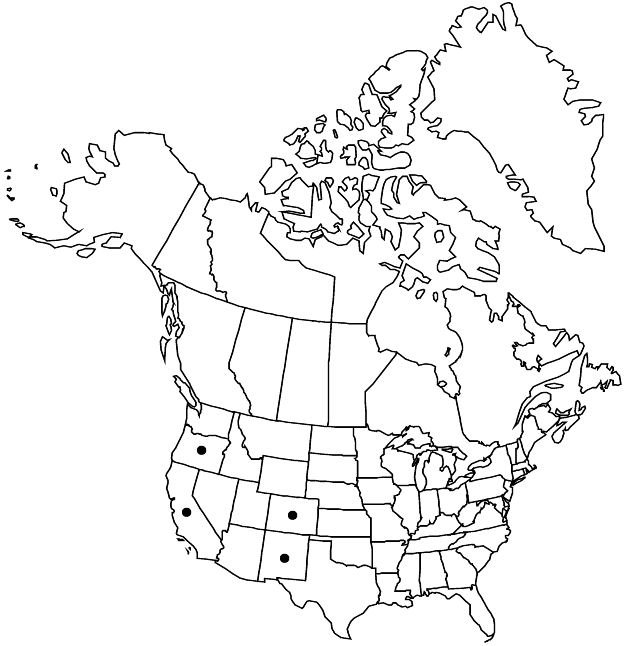Euphorbia crenulata
Rep. U.S. Mex. Bound. 2(1): 192. 1859.
Herbs, usually biennial, occasionally annual, with taproot. Stems erect, sometimes decumbent at base, unbranched or branched, 12–40 cm, glabrous. Leaves: petiole 0–2 mm; blade obovate-spatulate to oblanceolate, 8–22 × 3–10 mm, base broadly attenuate, margins entire or slightly crisped, apex obtuse to ± rounded, minutely apiculate, surfaces glabrous; venation pinnate, midvein prominent. Cyathial arrangement: terminal pleiochasial branches 3, each 2-branched; pleiochasial bracts obovate to orbiculate-reniform, wider than distal leaves; dichasial bracts usually connate 1/3–1/2 length (often only on one side), rarely only connate basally, triangular-ovate to reniform, base truncate to perfoliate, margins erose-denticulate to subentire, apex rounded to obtuse, rarely apiculate; axillary cymose branches 0–5. Cyathia: peduncle 0–0.5 mm. Involucre campanulate, 1.8–2.1 × 1.6–1.8 mm, glabrous; glands 4, crescent-shaped, 0.6–1.2 × 1.5–2.3 mm; horns slightly divergent to slightly convergent, 0.4–0.6 mm. Staminate flowers 11–18. Pistillate flowers: ovary glabrous; styles 0.9–1.4 mm, 2-fid. Capsules subovoid, 2.5–3 × 3.5–4 mm, 3-lobed; cocci rounded, smooth or puncticulate, glabrous; columella 1.9–2.3 mm. Seeds cream and brown mottled, oblong-ovoid to nearly globose, 2–2.5 × 1.4–1.7 mm, usually irregularly vermiculate-ridged and large-pitted, occasionally tuberculate or nearly smooth; caruncle reniform, conic, 0.5–0.6 × 0.5–0.7 mm.
Phenology: Flowering and fruiting spring–summer.
Habitat: Conifer, oak, and mixed forests, coastal scrub, grasslands, barrens and outcrops, roadsides.
Elevation: 30–1800 m.
Distribution

Calif., Colo., N.Mex., Oreg.
Discussion
Euphorbia crenulata is most common in the central valleys of California and southern Oregon; it occurs disjunctly in southwestern Colorado and northwestern New Mexico. Previous reports from Arizona are based on misidentified specimens. Euphorbia crenulata is closely related to E. commutata.
Selected References
None.
Lower Taxa
"/3" is not declared as a valid unit of measurement for this property."wider" is not a number."connate" is not a number. "distinct" is not a number."connate" is not a number. "distinct" is not a number.